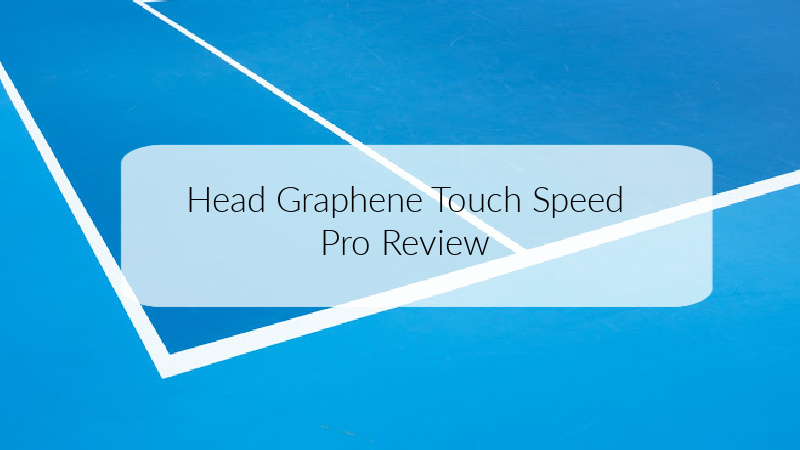Does this sound familiar? You’re on court playing your first game of the day and serving beautifully. You’ve won the first couple of games, but now you’ve been playing for a while and you’re all warmed up. Your palms start sweating a little, maybe the racket is a little small in your hand, and the racket begins to slip or rotate a little in your hand. All of a sudden you’re dumping balls into the net. If that’s ever happened to you, you should consider a Tennis Overgrip.
Why You Need a Tennis Overgrip
Any tennis racket that you care to pick up will have a grip of its own to cover the handle, but an overgrip is a piece of specially designed, padded tape that wraps around your standard racket grip to protect it and improve performance. Most overgrips are made from materials that combine the following features:
- Absorbency – so that sweat doesn’t make your racket slip
- Texturing – so there’s a firmer surface for you to hold
- Cushioning – so that the racket is comfortable to hold
- Tackiness – so that the racket is super-secure in your hand
All these features improve how solidly the racket sits in the hand, and because a new overgrip comes in at a fraction of the cost needed to replace a racket’s grip entirely, they can be tinkered with and changed regularly. That way your racket looks fresh and can work perfectly for you every single time.
As well as improving the feel of the racket in your hand, an overgrip will also protect the existing grip from damage. If you’re worried that your beloved racket – with its expensive padded grip – is getting a little worn out, then adding an overgrip will help maintain its condition for longer. Additionally, if your racket is a little small for you, an overgrip can pad it out so that it sits better in your palm. This prevents your racket from being able to rotate slightly in your fist, a problem that will hamper your shot accuracy.
Players suffering from elbow conditions, such as tennis elbow, should also try combining an overgrip with a padded racket grip. This both increases the size of the handle, making it easier to hold if you suffer from some form of tendonitis, as well as absorbing some of the forces that would otherwise be transferred straight through the handle into your arm whenever a ball strikes the racket.
Best Tennis Overgrips
A quick search will show you that dozens of brands out there are making dozens of different sorts of overgrip. They all promise exceptional grip performance, but we have some thoughts on which of them will be best for you:
Best All Around Overgrip: Wilson Pro Tennis Racquet Over Grip
Suppose you only play tennis from time to time and just want a simple overgrip that improves your game? Well, no one will argue if you show up on court with a Wilson Pro Tennis Racquet Over Grip. Wilson is a world-known Tennis brand, and these are one of the bestselling grips on the market and for good reason. They’re Roger Federer’s preferred brand too.
Features:
- Super-thin polyurethane with a felt surface
- Pack of three
Wilson Pro Tennis Racquet Over Grip’s balance absorption, comfort and grip extremely well, and are beloved by pros and amateurs alike. If you’re not quite sure yet what you need then this is a great all-rounder to use as a starting point. However, being partly aimed at the pro market, these are grips that are designed to be changed more regularly and they may not last as long as some others.
Best for Advanced Players: Tourna Tennis Over Grip, XL
Tourna’s Tennis OverGrip is the original overgrip product and is omnipresent in the Tennis world, used by many in the ATP 100. It comes in value-sized packs of ten and is only available in its trademarked shade of light blue. Tourna’s grip is designed to excel in wet conditions, keeping your racket extra dry and super soft. Many professional tennis players consider this the gold standard in racket comfort, and the extra-long tape is great for players who make use of a two-handed backhand.
Features:
- Extra-dry grip
- Distinctive light blue
- Pack of ten
Tourna provides excellent value and is perfect for pros. However, being aimed at the professional market, the design is aimed at maximum comfort and sweat absorbency for those who will be playing a lot. If you need to pad-out an undersized handle, or really need some extra texture on the surface to keep your grip firm, there will be better options.
You also need to buy a lot of them and can expect to change them over frequently as they wear out. If you’re still working out what sort of overgrip you need or want to use, it may be best to play around with some other brands before you buy enough Over Grips from Tourna to see you through to the end of the year. As a smaller disadvantage, most brands of overgrip come in a rainbow of colors to add a bit of personality to your racket, but if you buy Tourna you’re going light blue all the way.
Best Tennis Overgrip for Beginners: Senston Anti-Slip Overgrip

Unlike more traditional overgrips, Senston focuses on texture and gentle cushioning. If you’re new to tennis and the handle of your racket is perhaps little small, or just not quite gripping the way you want it, then Senston is a great option. They rely on ultra-textured material, rather than any tackiness, so if you really dislike the feel of a tacky racket then this will be perfect. Their affordable multi-colour packs come with a tonne of personality too.
Features:
- Raised bevels
- Cushioning
- Variety of colours
Being good for cushioning and increasing grip size of course means that anyone searching for an ultra-thin overgrip should look elsewhere. The main disadvantage of Senston is that their focus on textured material and cushioning sacrifices the excellent absorbency of other brands. With slightly poorer absorbency and an absence of tack, anyone who has issues with perspiration may find their racket slipping a little in warm conditions.
Best Tennis Overgrip for Intermediate Players: Head XtremeSoft Overgrip
Head Xtreme soft Overgrips focus on providing excellent gripping performance in as thin a package as possible, whilst also giving solid sweat absorption. Head’s thin elastomer tape is extremely tacky to the touch and has extra-large perforations in the material to make the surface more textured and absorbent. It’s also very durable, so you won’t need to change it constantly.
Features:
- Super-tacky material
- Microfiber felt
- Durable
- Variety of colors
- Pack of three
The thinness of Head XtremeSoft is really its selling point. If you have a racket and current grip that work brilliantly for you, then XtremeSoft can make your grip even firmer without really changing the underlying feel of the handle in your hand. This, of course, makes it unsuitable for anyone who wants to bulk out an undersized grip or just make their racket more comfortable. Similarly, players who have real problems with perspiration may want to look to a brand like Tourna (see above), which focuses on keeping your grip as dry as possible.
In Summary
Tennis overgrips are an ideal way to improve the grip size of an undersized racket and customize the feel of a racket to your personal playing style. They also look great and let you add a sense of personal style to your equipment, with all kinds of fun designs out there. Plus, they’re affordable enough that you can play around with the benefits of an overgrip, without the sort shelling out for the more significant expense of changing the grip on your racket completely.
You won’t find a professional player on the circuit not using an overgrip, so why not have a go and see what all the fuss is about. Enjoy the feel of playing with a brand new racket, without having to shell out for the privilege.
How to Choose a Tennis Overgrip
Once you have selected a tennis racquet there are five major factors that should impact on your choice of grip:
- Absorbency
- Texturing
- Cushioning
- Tackiness
- Durability
A lot of what makes an overgrip right for you will come down to how you play and your personal preferences. If your palms get a little sweatier than most, then an extra dry grip will be key to a good brand. If you just hate the feel of a tacky overgrip, then you’ll need a design that uses a lot of texturing instead. If you’re recovering from a condition like tennis elbow and want some cushioning to make the handle of your racket a little larger, a pro-grade ultra-thin overgrip won’t do you much good at all. It’s best to work out want you need from an overgrip before you start wading through all the different brands.
It’s also worth bearing in mind that some of these brands are aimed at amateurs and some at professionals. Pro tennis players can expect ultimate performance but won’t mind having to change their overgrip frequently. If you’re a hobbyist only on the court once or twice a month, changing your overgrip after every couple of matches may be more hassle than you feel its worth.
Given how much personal preference is involved, it will be worth experimenting with a few different types of Tennis Overgrip so that you can narrow the dizzying array of choices down to something manageable.
How to Apply a Tennis Overgrip
Applying your overgrip properly is extremely important because a poorly wrapped handle will be uncomfortable to hold, or begin to unravel during a match. Thankfully, overgrips are affordable pieces of kit, so even if your first attempt goes horribly wrong you can always have another go. After your first couple of times, you will start to get much more comfortable with the process.
- First things first, you need to clean the existing grip on your racket before adding anything over the top. Some soap and water are generally all that’s required here, but if you’re replacing an old overgrip, you want to get rid of any old adhesive that may remain.
- Wipe the handle down with a damp cloth and then wait for it to dry.
- Once that preparation is done, take your overgrip and peel off the long strip down one side that covers the adhesive required to attach it to your racket.
- Place the tapered end of the overgrip as close to the bevel at the base your racket handle as you can get and hold it there with your thumb (or get a friend to help).
- After that, begin wrapping.
Wrapping the grip around the handle is straightforward once you get the hang of it, but you’ll want to pay attention until you’ve done it a few times. A right-handed player should hold their tennis racket upside down, then rotate the racket clockwise whilst pulling the slack end of the grip to the right, keeping the overgrip under tension as it’s applied (this prevents wrinkles from appearing). If you’re left-handed, hold your racket upside down once again, but rotate your racket anticlockwise, and pull the slack end of the grip towards your left.
Either way, keep wrapping up along the handle, allowing each turn of the overgrip to overlap the previous layer by roughly a quarter of an inch. Once you’ve gone all the way down the handle, secure the overgrip at the top with some tape.

















